
 China
will spend USD64 billion to build 97 new airports throughout the country
by 2020.
China
will spend USD64 billion to build 97 new airports throughout the country
by 2020.
The ambitious plan will nearly double
the number of airports available for commercial use to 244 by 2020,
up from 147 at the end of 2006.
During the next twenty years, China
predicts that its air transportation passenger volume will grow 8.5
percent annually, becoming the world’s second-largest aviation
market. Rapid airport construction, a continuing influx of international
tourists into China driven by the ever-present threat of terrorism,
and the growing need to provide safety to air passengers, have led
the national level General Administration of Civil Aviation of China
(CAAC) to place greater emphasis on the integration of effective security
planning as part of the nation’s aviation sector development.
The airport security equipment market
is projected to grow substantially.
Most of the major new airports to be
built over the next two decades will be in Asia and the Middle East,
with China being the number one growth market. China will spend USD$64
billion to build 97 new airports throughout the country by 2020, with
a second international airport to be started in Beijing with the next
few years, according to information provided by CAAC. The ambitious
plan to nearly double the number of airports is more than rhetoric:
construction of 45 airports is already underway which will increase
the number of airports to 192 by 2010. By 2020 some 82 out of every
100 people in China will live within 100 km or 90 minutes drive from
an airport, up from 61 today. The 244 airports are grouped into five
categories, serving different purposes:
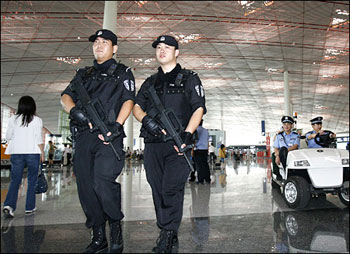 1.
North and Northeast China will have 54 airports, including 24
Greenfield projects anchored by Beijing Capital International Airport.
Beijing Capital will strengthen its status as an international air
hub.
1.
North and Northeast China will have 54 airports, including 24
Greenfield projects anchored by Beijing Capital International Airport.
Beijing Capital will strengthen its status as an international air
hub.
2.
East China will have 49 airports, including 12 new construction
projects, anchored by Shanghai Pudong airport. Pudong will also fortify
its status as an international hub.
3.
South and Central China will have 39 airports after 14 new projects
are completed, centered around Guangzhou Baiyun. Baiyun will continue
its development as an international hub.
4.
Southwest China will have 52 airports, including 21 to be built.
The new Kunming airport is to be fostered as the regional gateway
linking China with ASEAN members, and Chengdu Shuangliu International
Airport will be the regional hub airport.
5.
Northwest China will have 50 airports, with 26 new airports.
Urumqi airport is to be the regional gateway linking China to Central
Asia.
In 2007, total passenger traffic in
China reached 388 million passengers, increasing 16.8% from 2006.
Of that, Beijing Capital International Airport handled 53.5 million
passengers, Shanghai Pudong airport handled 28.92 million passengers,
and Guangzhou Baiyun airport handled 30.96 million passengers. The
other airports including Chengdu, Kunming, Chongqing, Shenzhen, Xian
and so on handled over more than 10 million passengers.
Owing to the global financial storm,
the Chinese central government issued a stimulus plan outlining a
total investment of RMB4 trillion (USD585.6 billion) for infrastructure
projects across the country. In 2009, the CAAC will get RMB100 billion
(USD14.6 billion) for the 22 key airport construction including Tianjing
Binhai airport expansion, Shanghai Hongqiao Airport expansion, Urumqi
Diwobao airport expansion, Kunming new airport construction, Shenzhen
Baoan airport expansion, Chengdu Shuangliu airport expansion and Hefei
new airport construction, among others.
With this growing number of airports
and levels of air traffic, aviation security is a high priority for
CAAC, both on the national and regional level. The government has
highlighted the aviation industry in its 10th Five-Year Plan stating
that China will speed up airport infrastructure construction, improve
airport systems, upgrade air- traffic control facilities and enhance
supporting construction. CAAC is taking this opportunity to incorporate
increased security measures into the aviation sector.
On December 10, 2007, CAAC issued a
special policy for civil airport operation security management, and
it went into effect on February 1, 2008. All airports are addressing
implementation by installing the necessary security equipment and
products.
 The major security product segments
are fire & explosives detection (explosives detection, X-ray &
infrared equipment and metal detectors), perimeter & access control
equipment (perimeter control, biometrics equipment, and alarms &
sensors), monitoring equipment (digital surveillance, intercom &
video door phones, and CCTV) and others.
The major security product segments
are fire & explosives detection (explosives detection, X-ray &
infrared equipment and metal detectors), perimeter & access control
equipment (perimeter control, biometrics equipment, and alarms &
sensors), monitoring equipment (digital surveillance, intercom &
video door phones, and CCTV) and others.
China airport development is growing
very rapidly. This growth is led by the big three, Beijing Capital,
Shanghai Pudong and Guangzhou Baiyun, which saw the greatest increase
in passenger traffic, cargo traffic and aircraft landing from 2006
to 2007.
The central government announced the
“National Airport Allocation Plan” in January 2008, According
to CAAC, USD$64 billion will be required to complete the entire project.
The underdeveloped western provinces and regions will be the main
beneficiaries of the development program. The majority of funding
will come from local governments, while private investment from both
within and outside China would be expected in the future as governments
look to share development risks with the private sector.
Driven by the ever-present threat of
terrorism, and the growing need to provide safety to air passengers,
the world airport security equipment market is projected to reach
USD131.7 billion by the year 2010 according to a report by Global
Industry Analysts, Inc. U.S. companies seeking to expand in the China
airport security equipment market can look forward to bright prospects.
China is paying increasing attention to this critical area under growing
pressure to comply with international security standards and regulations.
Aviation security regulations are becoming more stringent, forcing
airports in China to upgrade their security systems with a view to
meeting global standards.
The China airport security equipment
market is currently in its growth phase, fuelled by increasing demand
from governments as well as airports. The rising demand seen in China
is primarily due to growing pressure from other countries to comply
with global security standards and regulations. China is set for massive
expansion in airport construction, making the issue of airport security
more critical than ever before. Growth in tourism as well as in air
cargo volume is also expected to upgrade the security technology at
existing major airports to improve safety and efficiency. Much of
the security demand is likely to focus on high-tech equipment such
as fire & explosives detection (explosives detection, X-ray &
infrared equipment, & metal detectors), perimeter & access
control equipment (perimeter control, biometrics equipment, &
alarms & sensors), monitoring equipment (digital surveillance,
intercom & video door phones, & CCTV) and others.
Leading global and regional players
operating in the industry include: Assa Abloy AB, Bioscrypt
Inc, BioWise N.V., Bosch Security Systems GmbH, GE Security Inc.,
Group 4 Securicor plc, Honeywell International Inc., L-1 Identity
Solutions Inc., L-3 Communications Holdings Inc, Raytheon Company,
Siemens AG, Thermo Fisher Scientific Inc., EyeTicket Corp., Geoquip
Ltd, Future Fibre Technologies Pty Ltd, Dartagnan Biometric Solutions,
Electronics Corporation of India Limited, and Magal Security Systems
Ltd., and so on.
China Airport Security Development
One key local company, Tshinghua Tongfang,
is also entering this sector.
The General Administration of Civil
Aviation of China (CAAC) is in charge of civil aviation affairs of
China. Key buyers of new equipment and services in the near-term will
be the airport groups located in different cities of China. All of
the groups are under the management of the local government. The main
airport groups are: Capital Airport Group located in Beijing, Shanghai
Airport Group, Guangdong Airport Group, Yunnan Airport Group, Sichuan
Provincial Airport Group, China West Airport Group located in Xian,
Chongqing Airport Group, Xinjiang Airport Group and so on.
The Chinese government has no special
restriction on its own companies with regard to buying advanced airport
security technology and equipment on the international market.
Gordon Feller





 China
will spend USD64 billion to build 97 new airports throughout the country
by 2020.
China
will spend USD64 billion to build 97 new airports throughout the country
by 2020. 1.
North and Northeast China will have 54 airports, including 24
Greenfield projects anchored by Beijing Capital International Airport.
Beijing Capital will strengthen its status as an international air
hub.
1.
North and Northeast China will have 54 airports, including 24
Greenfield projects anchored by Beijing Capital International Airport.
Beijing Capital will strengthen its status as an international air
hub.  The major security product segments
are fire & explosives detection (explosives detection, X-ray &
infrared equipment and metal detectors), perimeter & access control
equipment (perimeter control, biometrics equipment, and alarms &
sensors), monitoring equipment (digital surveillance, intercom &
video door phones, and CCTV) and others.
The major security product segments
are fire & explosives detection (explosives detection, X-ray &
infrared equipment and metal detectors), perimeter & access control
equipment (perimeter control, biometrics equipment, and alarms &
sensors), monitoring equipment (digital surveillance, intercom &
video door phones, and CCTV) and others. 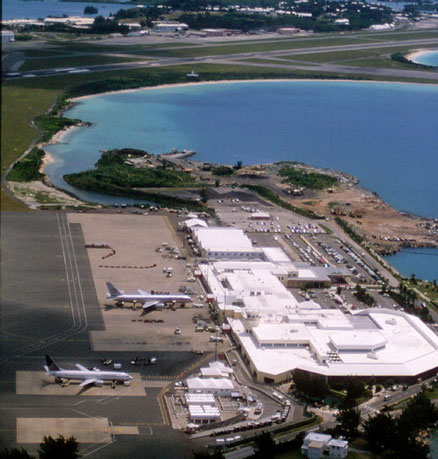
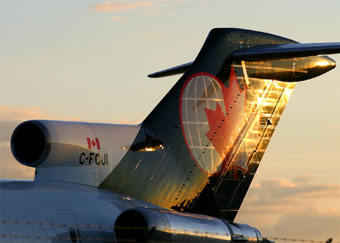
 “Bermuda
is predominately an in-bound market but we also have considerable courier
services which we handle as a consolidator for UPS/DHL/FedEx and IBC.
“Bermuda
is predominately an in-bound market but we also have considerable courier
services which we handle as a consolidator for UPS/DHL/FedEx and IBC.
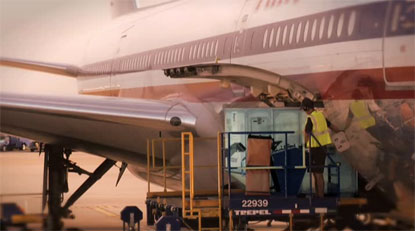
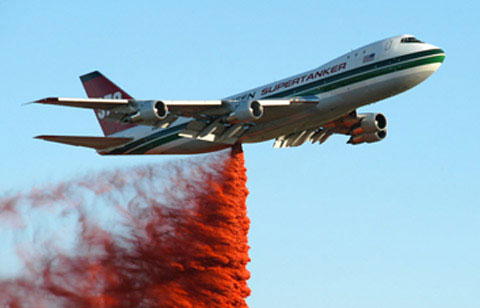

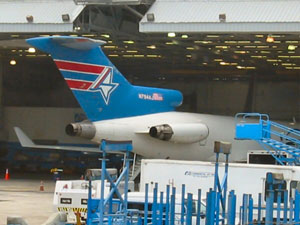 September
1: Airline
biz neg $6 billion first half. Pax & cargo growing again IATA says.
Cargo capacity utilization at 47.6% from 40% in Jan. Rates down 20%.
September
1: Airline
biz neg $6 billion first half. Pax & cargo growing again IATA says.
Cargo capacity utilization at 47.6% from 40% in Jan. Rates down 20%.
